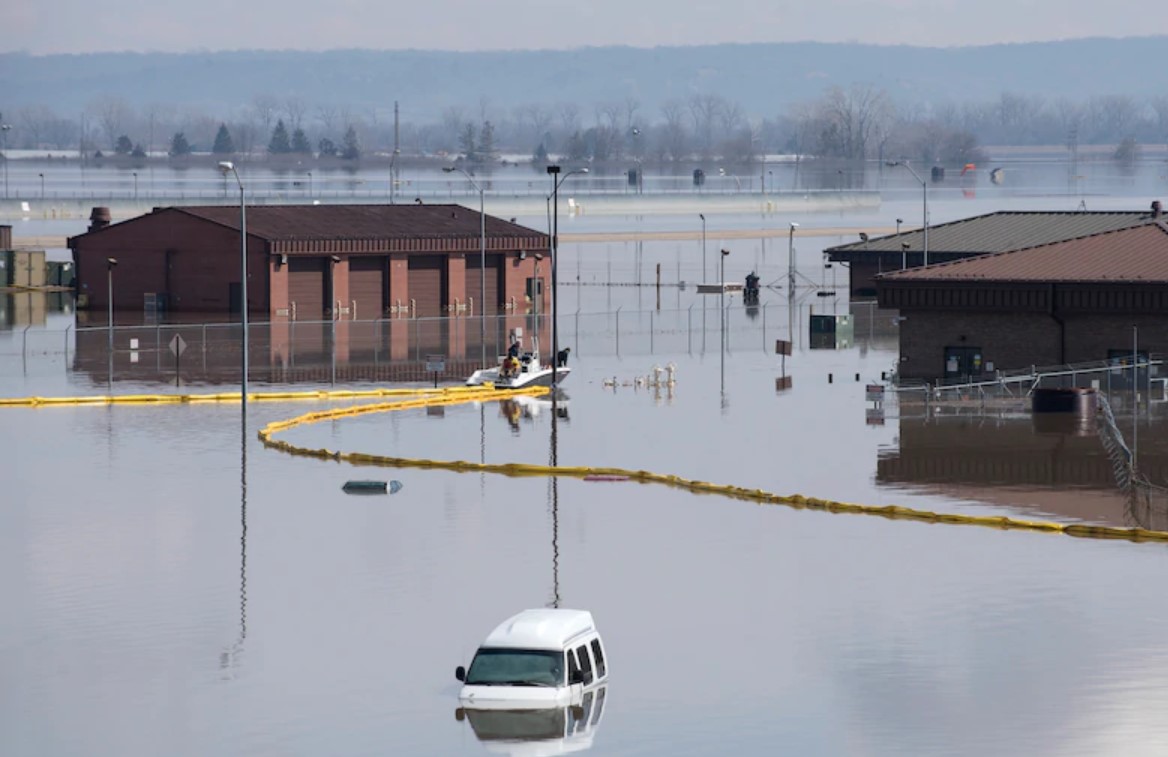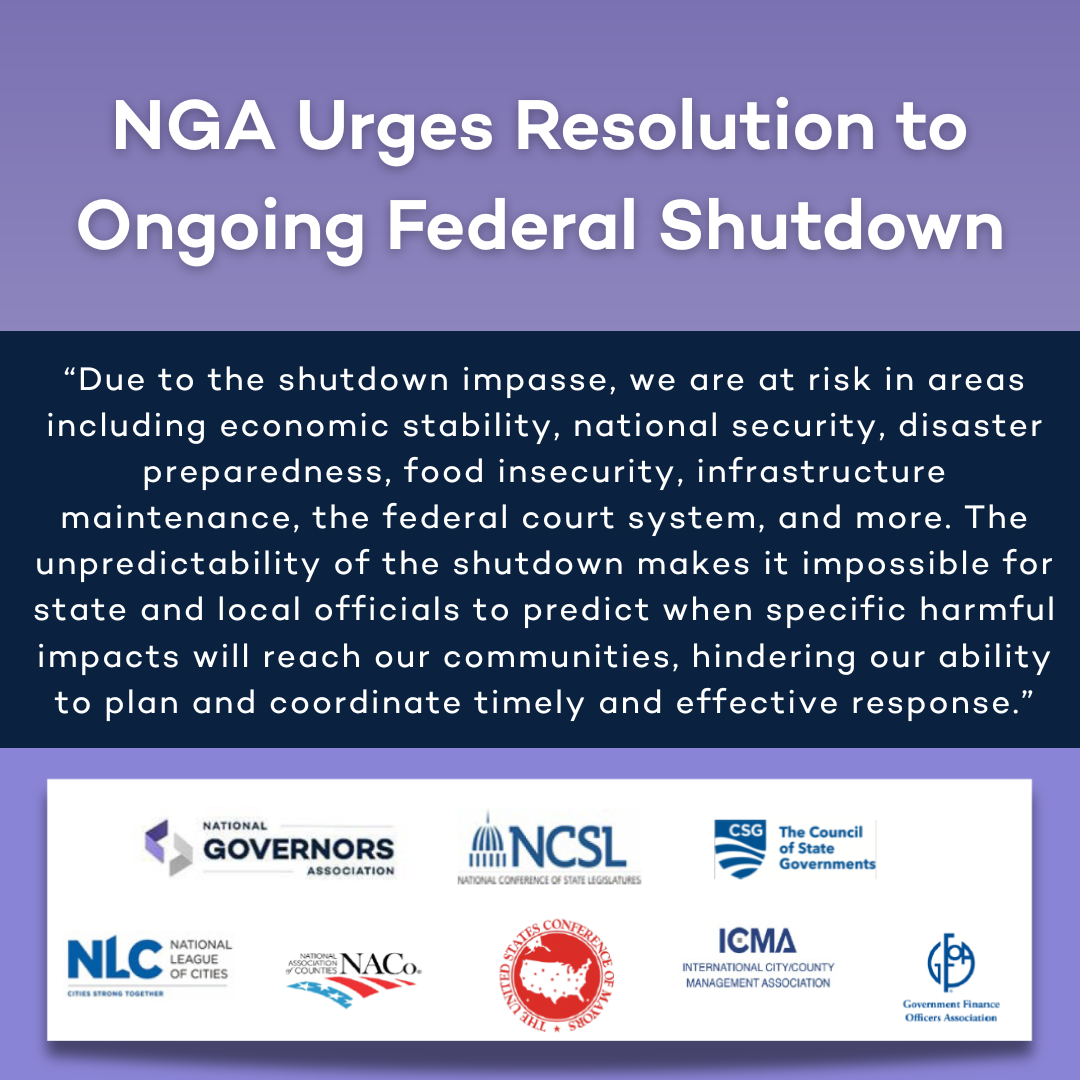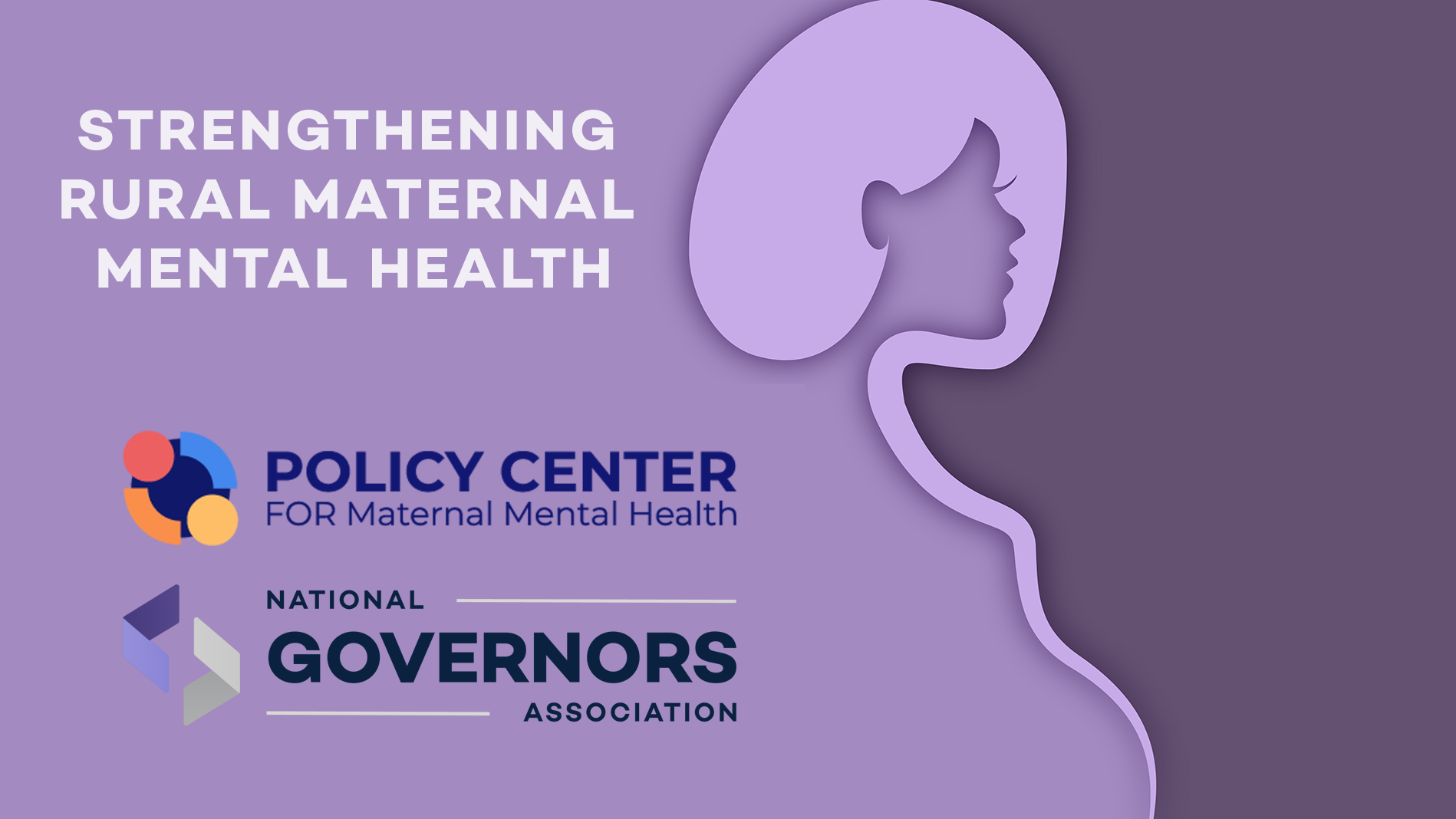The State Resilience Assessment and Planning Tool was created to help Governors and their staffs assess state resilience, identify gaps, and plan for natural and man-made disasters.
Background | Vision/Goals | Overview | Download | Instructions | Submission | Additional Guidance
Introduction
The National Governors Association Center for Best Practices’ (NGA Center) State Resilience Assessment and Planning Tool (SRAP Tool) was created to help Governors and their staffs assess state resilience, identify gaps, and plan for natural and man-made disasters. The tool and related efforts build upon the experiences of states and community leaders around the U.S. and globally, who have been developing various strategies to assess and improve resilience under projects such as 100 Resilient Cities, the United Nation’s Ten Essentials, and others. The tool is also based on input received during a January 2017 “Experts Roundtable on State Resiliency Assessment and Planning,” hosted by the NGA Center to inform the tools development approach.
Contact Us
Please email resilience@nga.org at any time for support with the tool or to request technical assistance on state resilience policy.
The SRAP Tool uses all hazards to help states prepare for a wide range of natural and man-made threats. Those can include storms such as hurricanes and tornados, earthquakes, tsunamis, cyber and physical attacks, and terrorist attacks. The development of the SRAP Tool was conducted under a grant from the U.S. Department of Energy. While the SRAP Tool is applicable to a broad range of resilience efforts, this version focuses on energy assurance and continuity of operations for that sector primarily, along with other critical infrastructure systems such as transportation, communications, and water.
Definition of Resilience
NGA defines resilience as the ability to withstand disasters better, respond and recover more quickly, and excel under new conditions.
Background
Governors increasingly face a host of human and natural disasters that threaten the viability of energy, water, transportation and other infrastructure assets that are critical to our way of life. Those disasters include severe storms, wildfires, droughts, inland flooding as well as diverse terrorism and cyber threats and chronic stressors such as poverty, disease, hunger, and violence. The impacts of these threats can be measured economically.

Since 1980, the National Oceanic and Atmospheric Administration estimates that there have been 279 natural disasters where costs and damages exceeded $1 billion. In 2019 alone, there were 14 weather- and climate-related disasters with losses exceeding $1 billion, and in 2020 to-date (as of September, 2020) there have been 16 such disasters, resulting in a total 188 deaths. Other impacts include a variety of disruptions to health, safety and environmental well-being. As such, Governors are seeking insights into ways to mitigate damage and recover more quickly and easily. Those approaches call for a coordinated effort across multiple agencies and levels of government, the private sector and civil society.
Changing demographics, and aging infrastructure further expose vulnerabilities that states previously were unaware of or did not pose a threat. In addition, states face a diverse terrorism and cyber threat landscape. These threats, when realized, result in significant cost to states. While federal aid may be available to help states recovery, it is often not sufficient to cover the full cost of recovery. Alongside these acute shocks are chronic stresses, driven by social, economic, health, and cultural dynamics. As such, Governors are seeking insights into ways to withstand stresses and shocks, mitigate damage and recover more quickly, easily, and in a coordinated fashion. Incorporating resilience into emergency planning, infrastructure systems, and the built environment presents the opportunity to reduce vulnerabilities to future threats, mitigate the impacts of disasters, and lower the cost and effort needed to respond to and recover from disasters.
SRAP Tool Vision & Goals
Vision:
Develop a tool to guide an assessment and action planning process that helps Governors enhance their states’ resilience.
Goals:
- Provide states with a framework for assessing vulnerabilities and current resilience efforts
- Help states identify key gaps in resilience efforts and at which level those gaps can be addressed (state, regional, local)
- Encourage a multi-disciplinary and multi-agency approach to disaster management
- Make available quantitative and qualitative data that identifies effective existing resilience efforts and areas for improvement
- Guide long-term planning and implementation efforts
Overview
The SRAP Tool is a self-assessment questionnaire designed to help states begin to understand their resilience. It is designed to start conversations around resilience, mitigating the impacts of disasters, and response to disasters. Answering the questionnaire will not in itself yield a complete roadmap to resilience. However, it will be a significant first step for states in resilience planning and help Governors identify gaps.
Some questions are subjective and responses may be open to interpretation, but NGA encourages state teams to have candid and introspective discussions around areas for improvement to maximize the utility of the tool. While results should be shared with NGA for score calculation and follow-up, they are not intended for public consumption and will be kept private.
The questionnaire is divided into five topic areas:
- 1. establishing effective governance,
- 2. evaluating risk,
- 3. assessing critical infrastructure vulnerabilities,
- 4. mitigating economic consequences, and
- 5. strengthening community ties.
It is unlikely that one person in the state will be able to accurately answer all questions, so a cross-agency, so the Governor’s office is encouraged to engage appropriate state agencies and subject matter experts to complete the questionnaire. The Governor’s office is ultimately responsible for the accurate completion of the tool and should review responses before submitting the final document to the NGA Center.
NGA recommends that the Governor’s office distributes and assigns portions of the assessment to relevant offices, agencies, or state subject matter experts and specify any specific objectives or areas of focus those entities should consider. Individual respondents should be given two to four weeks to complete their portion of the assessment then the governor’s offices should combine all of the responses received. At the outset of this exercise and upon completion, NGA recommends that the Governor’s office hosts a meeting with all participating offices and agencies to discuss and refine the answers gathered and identify next solutions to challenges identified.
NGA will be available to participate in these meetings virtually upon request to provide support and guidance. To request NGA participation, please contact resilience@nga.org. While states may submit their response as For Official Use Only (FOUO), states should not submit any information that is sensitive or raises privacy concerns, such as personally identifiable information (PII). NGA will take appropriate security precautions to protect state answers, such as limiting staff access to state responses. Assessment results will not be shared or made public by the NGA Center unless sufficiently aggregated and masked to protect the identity of the states.
Download the SRAP Tool
Please provide your contact information to access the tool.
Instructions
1. As a first step, the Governor’s office should identify any state-specific objectives or areas of focus for the implementation of the tool and establish a lead for the tool’s implementation. That lead can then identify who else will support implementation of the SRAP Tool. A kickoff meeting can then be held with the project team.
2. Note the name and contact information of the team lead and any other respondents in the “State Contact Sheet” tab. The team lead will also have the ability in this tab to specify any parameters or considerations they wish the other respondents to consider, such as prioritized industries, sectors, or agencies that much be considered.
3. Questions are listed in column C, with potential responses specific to each question in columns D through H. Actual answers may not fit the provided responses exactly, so appropriate judgment on behalf of the respondent is encouraged.
4. For each question, respondents will indicate on a scale of 1-5 the response that best describes their state (column I). This 1-5 scale appears in a drop-down list in column titled “Selected Response” and is indicated by the following categories:
- 1. Most Prepared
- 2. Well Prepared
- 3. Prepared
- 4. Moderately Prepared
- 5. Minimally Prepared
5. Respondents are also encouraged to provide a justification for the responses selected (column J), providing specific examples where possible, and identify potential opportunities for improvement for each question (column K). Once completed, the tool should be returned to the project lead to compile results.
Following Completion
Once the SRAP Tool is completed, please email the competed excel file to resilience@nga.org.
Within two weeks of submission, NGA will calculate resilience scores based on a formula that provides equal weigh to each questions. For questions with multiple sub-questions, the aggregate response will yield the point-equivalent of one question.
NGA will then follow up with the designated team lead to share results, explore potential solutions the Governor’s office can implement, and offer additional technical assistance as needed.
Completed assessments are for the benefit of the completing state and will not be shared or made public by NGA. NGA will use the inputs to and results of the assessments to provide in-depth technical assistance to those states completing the assessment and to identify potential future programmatic areas of focus to support Governors. NGA encourages states to use the results of the self-assessment and NGA technical assistance to create a critical infrastructure resilience plan or a list of priorities/objectives and an implementation plan to achieve them.
Due to the subjectivity of the tool, the SRAP Tool scores are not intended to be used for benchmarking. Rather, it is encouraged that states complete the tool on an annual or bi-annual basis to compare results over time and track progress.
Additional Guidance
Disseminating the SRAPT to the right state offices and agencies is critical to getting a complete and accurate assessment. NGA has listed agencies to consider below and recommends adding or removing agencies from this list based on your state’s needs.
Suggested State Agencies to Include
Resilience Essential Agencies
Environmental Protection
Fusion Center
Health and Human Services
Homeland Security/Emergency Management
Housing and Community Affairs
Military/National Guard
Public Safety/Law Enforcement
Public Utility Commission
State Energy Office
Transportation / Transit / Motor Vehicles
Other Core Agencies
Agriculture
Corrections
Disabilities
Education
Insurance
Labor, Commerce and Economic Development
Tribal/Native American Affairs
Veterans Affairs
It is also important to understand what industries and businesses are considered critical infrastructure in your state. For this tool, NGA is focusing on industries in and adjacent to the energy sector since it is considered a highly critical lifeline sector. Our list of suggested entities to consider are listed below, though the actual systems addressed can be determined by the Governor’s office.
Potential Critical Infrastructure Systems to Consider
- Electricity
Oil/Liquid Fuels
Natural Gas
Nuclear
Water / Wastewater
Transportation
Telecommunications
Defense critical infrastructure
This material is based upon work supported by the Department of Energy under Award Number(s) DE-OE0000817.
Disclaimer: This report was prepared as an account of work sponsored by an agency of the United States Government. Neither the United States Government nor any agency thereof, nor any of their employees, makes any warranty, express or implied, or assumes any legal liability or responsibility for the accuracy, completeness, or usefulness of any information, apparatus, product, or process disclosed, or represents that its use would not infringe privately owned rights. Reference herein to any specific commercial product, process, or service by trade name, trademark, manufacturer, or otherwise does not necessarily constitute or imply its endorsement, recommendation, or favoring by the United States Government or any agency thereof. The views and opinions of authors expressed herein do not necessarily state or reflect those of the United States Government or any agency thereof.












